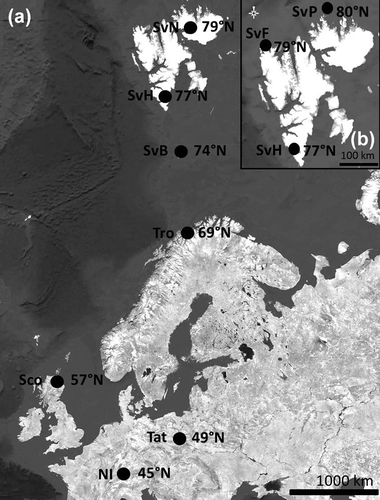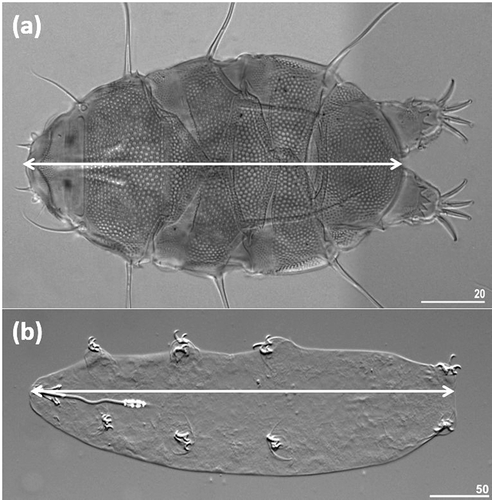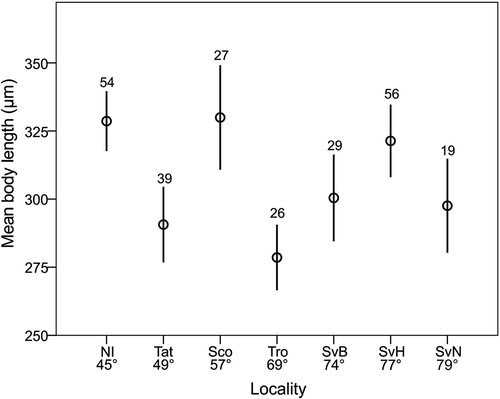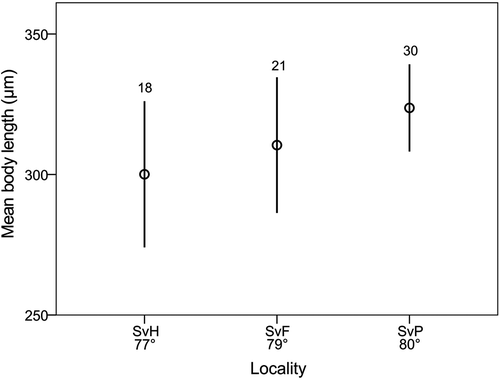Figures & data
Table 1. Significance (p) values of Hochberg’s GT2 post-hoc test for differences in Testechiniscus spitsbergensis body length between different localities. In Pilatobius recamieri all differences between localities were statistically not significant.
Figure 1. Map with sampling locations for (a) Testechiniscus spitsbergensis and (b) Pilatobius recamieri.

Figure 2. Tardigrada: (a) Testechiniscus spitsbergensis (under PCM); (b) Pilatobius recamieri (under DIC). The main white axis indicates body length used in measurements. The scale bars are in μm.



